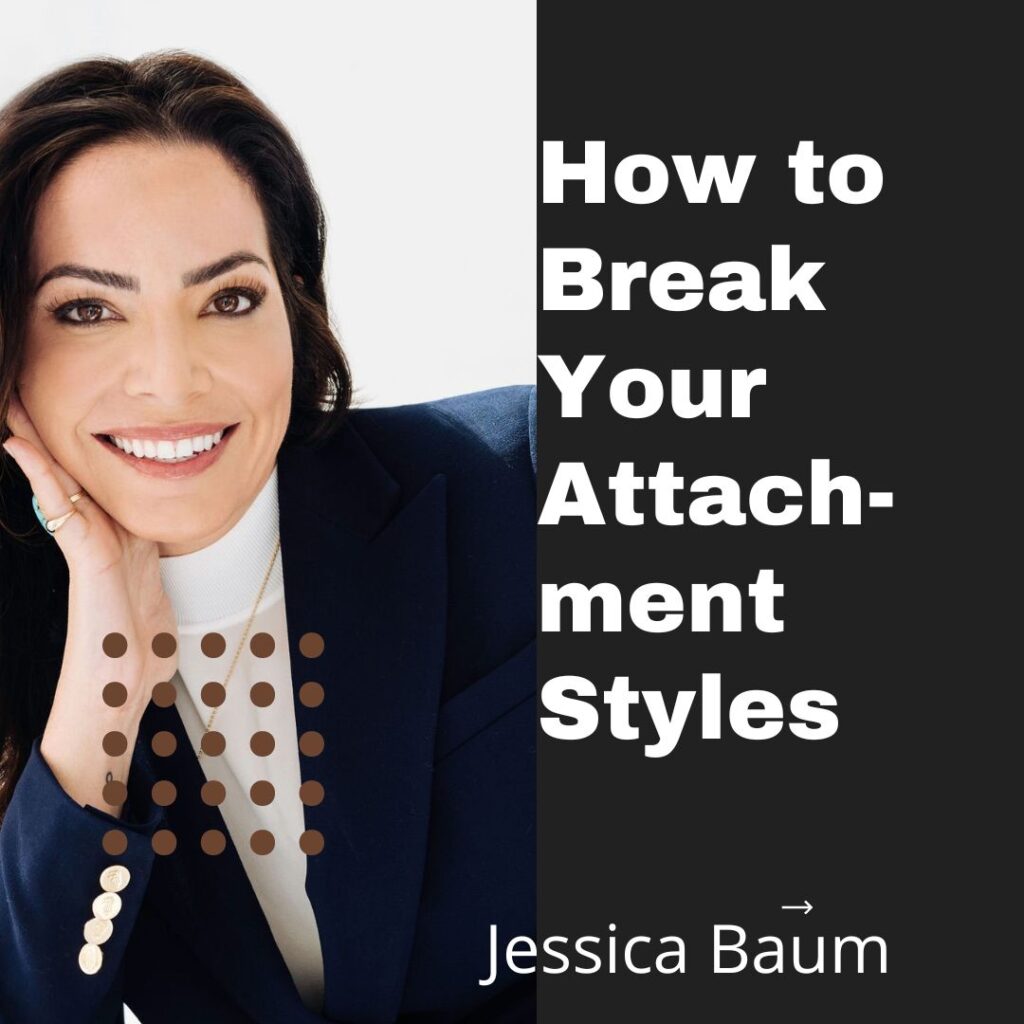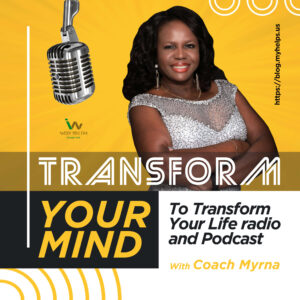Often when we’re mating or in the beginning of a relationship, we don’t know how it’s going turn out. We are not conscious of our, attachment styles, we don’t know how the dance is going to take place until the, attachment, takes place. After the honeymoon phase someone can be scared of intimacy and pull away or someone could be scared of abandonment and move closer. But these patterns don’t show up until a little bit later in the relationship.
Myrna: All right, Jessica. So as we start off, I always like to get a foundation so the listeners can understand your backstory. So what was your journey to becoming a, couples therapist? Tell me there’s a juicy story there.
Download the podcast here:
Introduction to IMAGO Therapy
Jessica: Well, definitely through my own interpersonal struggles for sure. You know, I did a session or something called, IMAGO therapy. So it’s, I’m a psychotherapist and I went to a psychotherapist and I got I worked with, IMAGO therapy, which means image, and through that work, I started to develop an understanding of my own, attachment wounds, and how I was relating in relationships and that definitely made me want to become a, certified Imago specialist.
So that’s one of the things that I am passionate about. And then I started working with, substance abuse centers, and started treating families with a lot of codependency, and system issues. I also treated a lot of couples in my private practice. So I started to see these unconscious dances and these wounds play out and you know with, Imago therapy, there’s a lot of trauma that comes up in, relationships, you know, and so our wounds show up.
So I was starting to see this happen over and over again. And I was starting to help it in big ways in my office and see really powerful transformations come up in, relationships, and so through my own journey and through my private practice. Yeah, I just I wanted to get this information out to the world. I also in my early 20s, identified as a, codependent, and read every book on, codependency, I could get my hands on and it wasn’t until I discovered, attachment theory, later on.
Sponsored Ad
This episode is sponsored by Young and Profiting Podcast with Hala Taha.
Looking for a new riveting and informative podcast? Well, look no further!
Check out Young and Profiting – hosted by Hala Taha!
Young and Profiting Podcast is all about listening, learning, inspiring and profiting. Each week, Hala investigates a new self-improvement topic and interviews the brightest minds in the world who are experts in that topic. A good life comes from good choices. But good choices come from experience!
Hala interviews the likes of many entrepreneurs and experts in their field. One of her most notable episodes was John Assaraf on Training Your Brain. Hala Taha knows a thing or two about the entrepreneurial spirit. She is the CEO of YAP Media and one of the biggest influencers on LinkedIn with over 175K followers. She was also featured on the January 2021 cover on Podcast Magazine, where she was referenced as “The Podcasting Princess”. She has also founded YAP Media Network, a network that specializes in the growth and monetization of podcast brands across podcasts, social media, YouTube and live stream events.
YAP’s subject matter ranges from improving your mentality, how to gain influence, the art of healing through your mind, and more!
Subscribe to YAP – Young and Profiting Podcast on Apple, Spotify or your favorite podcast platform and level up your life.

Codependency in relationships
I went to school and studied it for years until I really understood that, codependency, is a product of, attachment wounds, and how we relate and stay in connection, because that’s our biological imperative. So it was a combination of my own work and working with family systems and then working with couples that led me to want to write this book.
Myrna: That’s amazing. You unpacked a lot of stuff there. One, IMAGO therapy. I’ve never heard of it.
Jessica: I highly recommend, IMAGO therapy, or Emotionally Focused couples, counseling. Those are two modalities that you have to be extra certified in and they really work with the energy and dynamics in, relationships. Protection show up and the wounds start to show up and all of a sudden we’re having sensations and wounds, kind of these patterns showing up in our most romantic, relationships.
And we’re all kind of confused, but this is actually supposed to happen because what happened to us when we were younger is subconscious and then now we’re as adults and we’re partnering up all of that actually gets reenacted and hopefully can then get healed in relationship it with two conscious people doing the work.
So that’s why I really loved, IMAGO therapy, it’s not about a therapist sitting in a room telling you what to do. It’s actually led by this beautiful dance between the couple where the therapist is outside leading deep dialogue to help each person see where their wounding is, in such a beautiful way. It’s experiential. So it’s a process you go through and it just impacted me very deeply that I decided to get certified and trained in it myself and I’ve had a lot of success with it.
Sponsored Ad
This episode is being sponsored by Bombas.‘ Bombas’ mission is simple: make the most comfortable clothes ever, and match every item sold with an equal item donated. So, when you buy Bombas you are also giving to someone in need.
Bombas designed their socks, shirts, and underwear to be the clothes you can’t wait to put on every day. Everything they make is soft, seamless, tag less, and has a cozy feel.
Bombas no-show socks are designed for comfort while being specially engineered to never fall down. So let your ankles be free to soak up the sunlight.
There t-shirts are made with thoughtful design features, like invisible seams, soft fabrics, and the perfect weight so they hang just right.
Bombas underwear is so breathable, and fits so well, it feels like you’re wearing nothing at all. In a good way.
And did you know socks, underwear, and t-shirts are the three most requested clothing items at homeless shelters? That’s why Bombas donates one for every item you buy.
So far, Bombas customers like you have helped donate over 50 million items of essential clothing.
Go to Bombas.com/transform and use code transform for twenty percent off your first purchase.

Childhood trauma shows up in our attachment styles
Myrna: I guess everything is, trauma, because even if you were abandoned, or you were abused, it still in the trauma bucket. Right. So is that what you’re talking about?
Jessica: I’m talking about, developmental trauma. And so, trauma, has a big word and if you’re listening you might be like, I have no, trauma. But the truth is, our earliest experiences even though they might not appear like, trauma, how we relate to our primary caregiver, how rupture and repair happen, what those early interactions are, they shape your developmental process. And is the lens in which we see the world, they shape our physical body, they shape our nervous system and ultimately our, attachment styles.
So there’s a lot of impact that happens when we’re young that we don’t even realize it until we get intimate and close with another in our adult years. And so that’s essentially, attachment theory. But yeah, it’s adaptations. How we adapted when we were really small to stay in connection is or keep ourselves safe is usually how we will adapt in our, romantic relationships, when things get a little bumpy.
Myrna: Okay, all right. So I’m still trying to wrap my head around this one, so I’m pretty sure our listeners are too I’m thinking that, you know, we have had men and women seem to pick the same type of partner, they usually end up in, relationships, where maybe the man is abusive, or a relationship where they’re abandoned, but they seem to have these, attachments styles. So I think that’s probably where you’re going.
Sponsored Ad

Our attachment styles comes from embedded patterns
Jessica: Attachment styles, is a category but they’re really embedded patterns. That we form in our nervous system early on. And there’s four traditional, attachment styles, categories:
- Secure attachment style- That’s someone who has grown up with an inherent sense of trust, doesn’t struggle with intimacy or feels okay being alone. They really are secure within themselves.
- Insecure attachment style – There’s anxious which is the one I wrote my book on,
- Avoidant attachment style – There’s fearful avoidant and so anxious people tend to have gotten inconsistency in their parenting. So they, there’s also a heightened anxiety and hyper vigilance.
We actually mirror our mother’s brain and nervous system when we’re developing and if our primary caregiver wasn’t consistent enough, we’re always kind of waiting for the shoe to drop. There’s a sense that connection isn’t going to stay the same, I got to keep my partner happy, or I have to bend over backwards to please them. We’ll tend to self abandon our own body as a way to survive.
I mean, it’s actually how we learn to survive and stay in connection in our earliest, relationships. Avoidant, attachment style, is really someone who didn’t get their emotional needs met well, and learn to kind of rely a little bit more on their own and they become more independent. They tend to be people who are really focused on career and who are successful and they are not as dependent, they don’t need as much connection.
3 Types of attachment styles
These two anxious and avoidant, attachment styles, tend to partner with each other. So just their inherent needs are so different because of their, attachment styles. And then there’s fearful avoidant, which is a embedded combination of both. So it’s a two way street. So you have your embedded patterns, but how they show up depends on also who you attach to and how their patterns combined with your patterns,
Then you have a combined embedded pattern dance between the relationship and I would say all, relationships, have a dance to some degree. So it’s complicated and it’s layered but usually you have one way of trying to get your needs met, whether that’s reaching out expanding, being dependent or being, interdependent, and isolating when you’re scared shutting down.
Myrna: I was thinking, attachment styles, I was thinking like attachment patterns. But what you’re talking about is is is how you show up in a relationship.
Jessica: Yeah, I mean, due to neuroplasticity, no one can say that any, attachment style, is static. We have the research to show that things are always changing and we will move towards warm connection and build new neural wiring and build new secure attachment. The more secure people we attach to not just our husband or wife but friends and colleagues. The more we have secure safe people in our life, the more self confident and the more inner security is built.
It’s actually, healthy dependency, or, inter-dependency, that we’re looking for. So if a baby felt like there was a lack of trust, and they will be dropped, and they couldn’t depend on their primary caregiver, where adults can actually depend in healthy ways on many different people who are safe and secure. You rebuild that inner security from within and it’s very changeable. It does require a little bit of work. But it definitely is a changeable thing.

Our attachment styles are changeable
Myrna: That’s good to know. That, you can be changeable even outside of therapy. If they form an attachment with someone that’s nurturing as an adult, they will start to build back as a whole person.
Why do we pick the same people?
Jessica: Someone who has an insecure base might not do this to secure person because their nervous system is very steady and calm that can feel boring and not exciting for them. So they’ll pick what’s familiar unconsciously. A lot of relationship type of psychotherapy says that our core wounds are going to come up no matter who we pick.
The subconscious is going to come up in those deep, relationships. But if you find yourself attracting the same type of person over and over again, the bad boy or bad girl, or an emotionally unavailable person, then that is an indication that you had an unavailable person in your childhood and there’s a familiarity there. And so you’re trying to repair.
Myrna: That’s what I thought we were talking about the, attachment styles. That’s where we’re gonna go is Yes, I know that you subconsciously. And I even heard that narcissists and people that are predators, pick up on the person that is that is insecure, and that’s the person that they attached to. Right?
Jessica: Narcissists are deeply insecure themselves. So there’s a sense of that going on in in them as well. But yeah, they can pick up on that or they will.
Myrna: How do we break that, attachment style cycle? Now, I think you touched on that a little bit just now that we picked things that are familiar. But let’s touch on the, attachment wounds. So let’s say that we had parents that didn’t see us, you know what I mean? We weren’t really totally abandoned, but we were not seen.
Jessica: Yeah, that’s always the, autonomic nervous system, picking things but our wounds exist inside of us. You tell yourself, I’m unlovable, I will be left. I’m unworthy. That’s an inherent sense that lives in our body. That’s not even the story. It’s a feeling that lives inside of us. So if we’re feel that way, we can even pick someone who make us at the center of their world. And as the relationship goes through phases, and they step away, whether they really step away or they really neglect the relationship. All the feelings of being unworthy or not being seen or being neglected are actually going to come to the surface.

We are triggered or awakened by past trauma
Because there was togetherness, and then there were separateness which happens in every relationship. So it’s going to trigger your feelings of unworthiness. The degree in which it brings it up as depends on the person that you pair with. If you have a turbulent relationship, it might just keep repeating that feeling and that sensation and again, that’s your nervous system going into fight flight, coming up with stories in your head to match what you’re feeling in your body, and you’ve just keep buying the same narrative over again.
Often when we’re mating or in the beginning of a relationship, you don’t know how it’s going turn out. There’s no protections up and sometimes you don’t know how the dance is going to take place until the attachment takes place. After the honeymoon phase someone can be scared of intimacy and pull away or someone could be scared of abandonment and move closer. But these patterns don’t show up until a little bit later in the relationship.
So it can be really confusing because something could start off really wonderful and go south really fast. And that’s because of protections and adaptations and your nervous system started to get really scared and it became unsafe really fast for one or both parties.
Myrna: So what exactly is a trigger? And what are some of the tools that we can use when triggered in relationship?

Triggers are formed from sensations stored in the body
Jessica: Well, if it’s sensational, it’s early memory, so if you are a teenager and you’re getting left, it can leave pain for sure. And there can be, trauma, later on in life. But if you have a really secure base, you’ll probably be like, Oh, you’ll recover much faster. When we’re really looking at memory, there’s different kinds of memory. We store memory first when we’re really young as sensation we don’t have a hippocampus fully developed. So the sensations are really big.
I don’t say, trigger, I like to use the word awakened because we’re awakening in these moments to painful things that are going on inside of our body. But if you know the nervous system, what we know is that we’re supposed to feel safe. So when you feel abandoned, your system will shift out of safety into fight. Flight freeze, or fawn depending on how you adapted in your patterns.
So when your body is going into an activated state, usually sympathetic arousal and your thoughts start blaming and projecting there’s a chance that you’re not feeling safe in your body and then that has activated something very scary inside. When I hear the work, trigger, I think of a gun and I think trauma and shame but really we’re awakening parts of ourselves.
Myrna: Wow. You’re doing good work. I am very interested in your in your research. It’s amazing. All right. So you have developed this method that’s called the, self-full method. You want to tell us about that?

What is the Self-full method
Jessica: It’s in this book that I just published called “Anxiously Attached: Becoming More Secure in Life and Love” I cover the, self-full method, deep in here In layman’s terms. I worked with a lot of, codependent, people who would come into my office and I would be like, you need to be more selfish. You need to learn how to take care of yourself and they would look at me like that’s a bad word.
Myrna: I just found out the other day you’re right that selfish just means taking care of yourself. It’s not a bad word.
Jessica: Well actually selfish is not great. But what I said is so selfless is that state I talk about constantly giving and giving and giving. And selfish is a state of taking care and protection. They’re not bad states, either one of them but they’re both sympathetic states of arousal in our nervous system. A, self-full, state is a norm as a calm state of connection where there’s fluid boundaries, there’s an ability to request your needs. There’s a sense of safety in the relationship.

Is being selfish a bad word?
And we all travel within the states all the time. But you might notice how I’m selfless in my relationship. I tend to self abandon, I tend to give a lot away, I tend to people please when I’m in a relationship because I don’t want to lose love and I tend to attract really selfish people. That’s a dynamic that you see a lot, so working towards a, self full, place is about doing your own inner work, and really being with more parts of yourself and understanding your nervous system in a new way.
Attracting someone who equally can give an exchange of these things so that you don’t keep giving, because the giving is an adaptation. And it’s coming from fear rather than always wanting to give. And even a selfish state which everyone enters are fluid, but if you enter a really selfish or close down or walled off state, it’s also a state of activation and a state of fear.
So those two tend to be the polar opposites of the spectrum. And so, self-full, is like a ventral state of connection. Getting yourself calm, being connected with yourself being connected with others feeling safe in your relationship. And so I’ve talked about how to cultivate that within your own body and your nervous system and in the, relationships, in your life and how to work with that and develop more, more capacity to be in a, self full, state.

Conclusion
Myrna: That’s good as you were talking, I thought of myself. How can women connect with you and get a copy of your book?
Jessica: Yeah, so I mean, my book is everywhere. It’s on Barnes and Nobles. It’s on Amazon, you name it. It’s everywhere. It’s going to be in seven countries, it is just really getting out there in the world. So you can just go on Amazon and put in Anxiously Attached, becoming more secure in life and love. You can also find me on Instagram @JessicaBaumLMHC. My website https://www.beselffull.com/ is where I have some of my online courses and the relationship Institute in Palm Beach is a private practice here in South Florida.
We do intense couples work trauma, I have a five therapists on my team. So we work to collectively to treat couples and system issues. So those are all the ways that you can find me. I’ve poured my heart and soul into that book for the last four years and I think if you resonate with someone who has, codependency, or you self abandon or you give yourself away, it’s really a healing path to forming a healthier relationship with yourself, but also getting that fulfilling relationship that you want and truly deserve on the outside.









